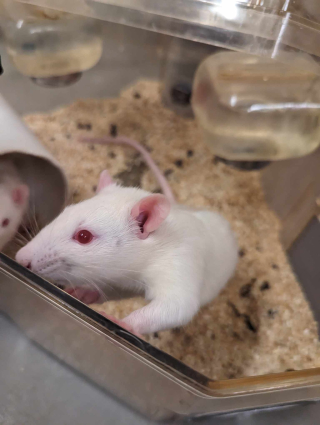Psychedelics
This laboratory is motivated in exploring the powers of psychedelic compounds on physiological functions, neural circuitry, and psychological disorders. Compounds include lysergic acid diethylamide (LSD), psilocbyin, N,N-dimethyltryptamine (DMT), and 5-methoxy-N,N-dimethyltryptamine (5-MeO-DMT). These compounds have potent effects on the brain, yet we still understand little about their mechanisms of action. Increasing our understanding of their actions on the brain will allow us to explore potential applications of these drug in the clinical setting but also help us learn more about how the brain functions in pathological states such as schizophrenia and psychosis. In our lab, we are assessing the effects of these drugs at the behavioral, brain circuit, neuronal, and subcellular levels.
You can learn more about the field and our current research in our two reviews (here and here).
Melatonin
This laboratory is a major contributor to scientific advancement in our understanding of melatonin and its receptors. It is now well know that the neurohormone melatonin affects mood, anxiety and sleep. But which of its receptors, such as MT1 and MT2, mediate these functions is still obscure (see more in
PubMed). We have recently characterized the role of the MT2 receptor in the
regulation of NREM and
neuropathic pain. We are also investigating the role of novel selective MT1 receptor agonists in the treatment of depression, sleep disorders, and chronic pain (see in
Pubmed).
Neuropathic pain
Neuropathic pain is a complex pathology that often occurs co-morbid with diseases and injuries, including physical traumas, diabetes, HIV, multiple sclerosis, and more. Full relief from this pain is exceedingly rare for these patients and current available treatments (tricyclic antidepressants, SSRIs, anticonvulsants, and lidocaine) only achieve partial relief from symptoms. Neuropathic pain also accompanies psychiatric comorbidities such as insomnia, depression, and anxiety. There is a massive clinical need to better understand the central and peripheral mechanisms that create this pain in order to create more treatment options. We are exploring alternative treatments for this type of pain, including cannabis derivatives (THC and
cannabidiol) and
melatonin agonists.
Cannabis
Does cannabis have an effect on mood? We have demonstrated that cannabis at low doses has antidepressant-like effects in animal models and increases the firing activity of serotonin, a neurotransmitter implicated in mood regulation. At higher doses, cannabis decreases this activity. This process is mediated primarily by the prefrontal cortex. We have also shown that the CB1 antagonist rimonabant decreases serotonin activity (see more in PubMed, see also).
More recently, Dr. Gobbi and colleagues have also replicated these data in humans, showing through a meta-analysis that the consumption of cannabis in adolescence increases the risk of depression and suicidal behavior in young adulthood (see here).
Does the enhancement of the endocannabinoid system induce antidepressant-like effects? The enhancement of anandamide (an endogenous cannabinoid), through the blockage of its degrading enzyme FAAH, induces an antidepressant-like effect. The FAAH inhibitors may thus potentially represent a novel target to treat mood disorders (see more in PubMed).
Mood disorders
Major depression is a mental illness characterized by sadness, lack of pleasure, fatigue, anxiety, sleep, worthlessness, despair, and cognitive impairments. Patients with depression have a high suicide risk. Depression is a major cause of morbidity worldwide, with a lifetime prevalence from 3%-17%. Investigating psychiatric conditions in animal models is challenging, yet critically necessary if we are to understand the disease etiologies and explore new pharmacological therapies. We use different protocols to induce depressive-like and anxiety-like phenotypes in rodents and measure their resultant phenotypes using well-validated behavioral paradigms. Additionally, we are able to corroborate our behavior findings with physiological mechanisms, elucidated through techniques such as in vivo electrophysiology, EEG, protein analysis, and dendritic spine analysis. From these models, we are able to test the efficacy of novel treatments for these conditions.
Treatment-resistant depression
In recent years, at the McGill University Health Center, she has developed a registry for patients with treatment-resistant depression, including unipolar and bipolar depression. This Registry is unique in Canada allowing to follow the clinical therapeutic trajectories of people with severe depression. See in Pubmed. See also.




